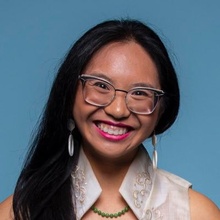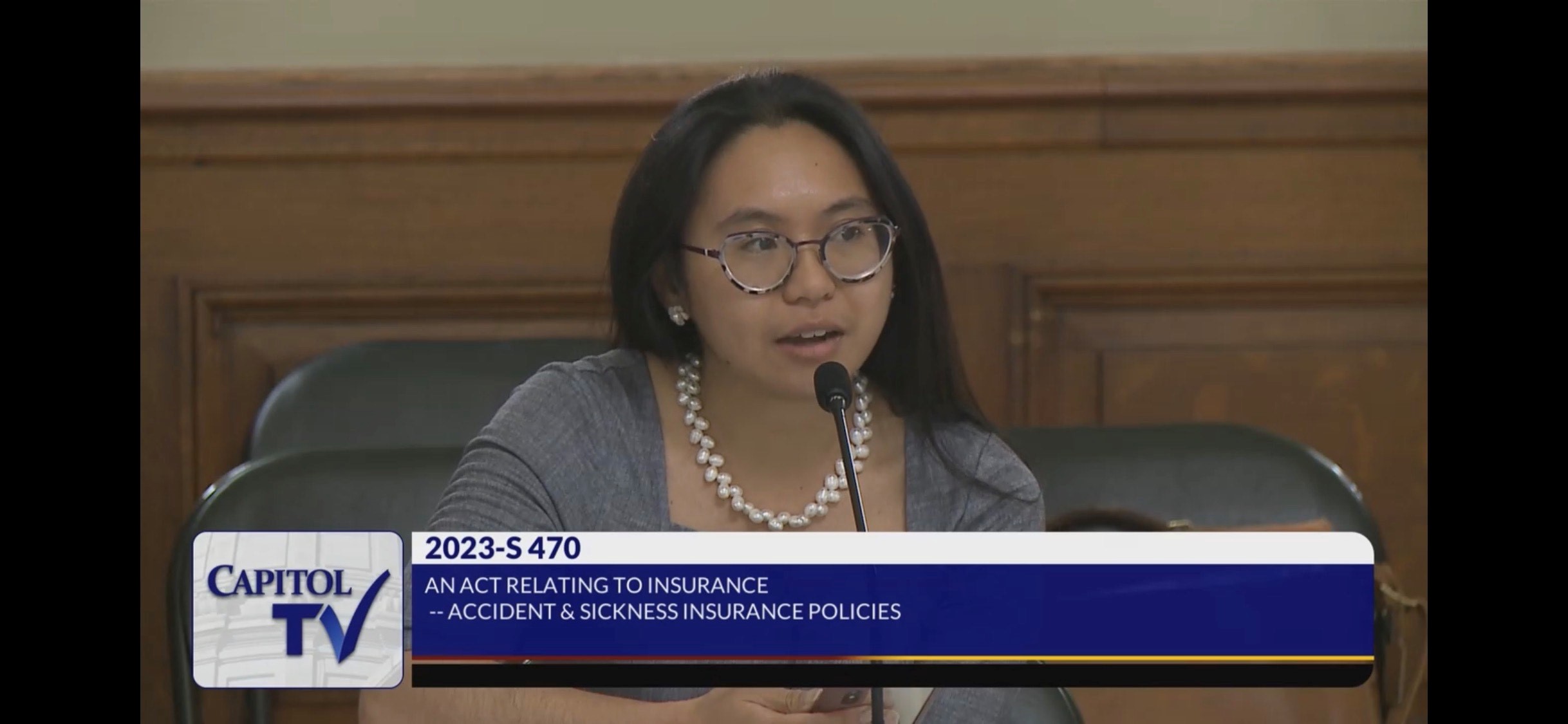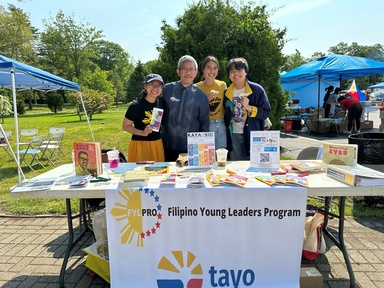
Melissa Palma (15MD) is many things these days—a physician, an educator, an advocate. But when it all began, she was an Iowan.
“I like to tell people I spent K through 20th grade in Iowa,” she says.
Palma grew up in Waterloo, Iowa. The roots of her future career interest in health equity are planted in her experiences growing up in a small city undergoing continual demographic change.
“Waterloo is a very diverse city,” she says. “Between the time I left for school and when I returned for a community health needs assessment, a large population of Burmese refugees moved to the area. So, when we talk about health disparities and access to care for all Iowans, it’s not just for folks who live in rural versus urban areas; it is also highly intertwined with things like immigration policy and increasing numbers of displaced people from global conflict and climate crises."
Her experience was also fundamentally shaped by being a first-generation child of immigrant parents from professional backgrounds, she says. Her father, a rheumatologist, practiced in Waterloo for nearly 30 years. He was one of relatively few physicians practicing in this specialty in northeastern Iowa at the time.
“I grew up seeing my dad not only doing outreach clinics in the Philippines whenever we would travel home to see family, but also doing outreach clinics in Waverly,” Palma remembers. “Seeing the effects of rural medicine and health care access in terms of the availability of clinicians, I was learning about all the different ways that systemic and structural racism are present in a lot of the places that we live.”
She describes her mother’s vocation as “a community organizer without an official organization.” Palma’s mother took it upon herself to reach out to Filipino immigrants when they arrived in the area—often for careers in health care—and make sure they had the support they needed to get established in their new home.
“My mom would invite them to the house and say, ‘Here's how you get a winter coat,’” Palma says. “She did many of the services of a resettlement agency, just out of her own duty to serve her community. I think the combination of being able to see the power of community care, as well as the great need that there is in these communities, shaped how I came into medicine.”
Health equity, global and local
Palma began medical school already driven to become a primary care physician. Her reasons for achieving this goal only deepened as she explored her budding interest in global health.
"I really dug deep. Why do I want to be a doctor, and how do I best be a community doctor?” she says.
She became interested in global health because of the “pathologies of power,” she says, referencing the work of late medical anthropologist Paul Farmer, MD, PhD. Palma came to understand that the same principles of health equity that guided global health care were also applicable domestically, especially among immigrant populations in the U.S. and even at home in Iowa.
“It all comes down to how structures are designed to either include some groups or exclude other groups,” Palma explains. “Are we funding community health centers in rural areas and urban areas that are culturally concordant with the populations they serve? On the Meskwaki reservation, that might look different than in West Liberty, which might look different than areas of Waterloo that have high Burmese, Bosnian, or Congolese populations.”
So how do you, as a medical student, enact change when all of these systems are by design excluding some folks more than others? For me, the answer was to put yourself where the patients are. That is where you need to go to learn.
Melissa Palma, MD, MPH
For many people at the start of their medical education, questions this big could be intimidating. But once Palma’s interest in immigrant health equity sprouted, her experiences in the college’s Global Health Distinction Track and participating in community health outreach clinics caused it to grow exponentially.
“So how do you, as a medical student, enact change when all of these systems are by design excluding some folks more than others?” Palma asks. “For me, the answer was to put yourself where the patients are. That is where you need to go to learn.”
Her work in medical school took her from immigrant communities in Waterloo, to the U.S.-Mexico border, where she observed health care needs among unaccompanied minors, to Peru, where she helped conduct an epidemiological survey of clubfoot under Jose Morcuende, MD, PhD, a University of Iowa professor of orthopedics who is an international expert in applying the Ponseti Method for the non-surgical treatment of clubfoot.
“Every step of the way, I've become a little more of the doctor I hoped that I would become as a medical student,” Palma says. “I am able to apply that experience towards health disparities research and public health communication, which are all within the purview of a primary care clinician.”

Bringing it all together
Palma wove these experiences into a career that represents her values and her perspective. She is a family medicine physician at Thundermist Health Center in Woonsocket, Rhode Island, and she also holds an academic appointment as a clinical assistant professor of family medicine at Brown University.
Additionally, she serves as a medical and public health advisor for a national community health nonprofit called Tayo Help, an arm of the Filipino Young Leaders Program which focuses on community-based participatory research to advance health equity for Filipino American individuals. Palma shares that during the COVID-19 pandemic, one in three nurses who died were Filipino American—a shocking statistic, given that this group makes up only 4% of the U.S. nursing population.

“Filipino nurses are more likely to be on the front lines working inpatient and ICU settings. They’re more likely to be working full-time positions and living in multigenerational households. And the Filipino American community, as a whole, has disproportionately high rates of cardiovascular disease, high blood pressure, diabetes, and obesity, which puts them at higher risk for severe COVID disease,” Palma says. “Combine all this with the fact that, if your immigration is tied to your occupation, you may be afraid to speak up against workplace safety violations in the hospital setting, and it leads to a storm.”
These days, her primary research concern is health disparities and cardiovascular risk among Filipino Americans. She earned a master's degree in public health and pursued a preventive medicine fellowship at Northwestern University and Cook County Health in Chicago to further this work.
“I love that in the jobs that I have, and the way I practice them, allow me to affect change on different levels that I think are needed,” she says. “At my job at a federally qualified health center, I'm able to provide care to those who need it most, and I'm able to train students in methods of community-based participatory research. In my role with Tayo Health, I'm able to apply all the academic and nonprofit management lessons that I've learned as well as teaching a team of students from all over the country how to affect community change.”
Palma’s hometown, family, and experiences in medical school may have been the roots of this fruitful career—but the sunlight and the water are the passion she has for helping patients, regardless of cost.
“The reason I wanted to go into medicine was for the patients. Of all the things I do for my job, caring for patients is my favorite part,” she says.